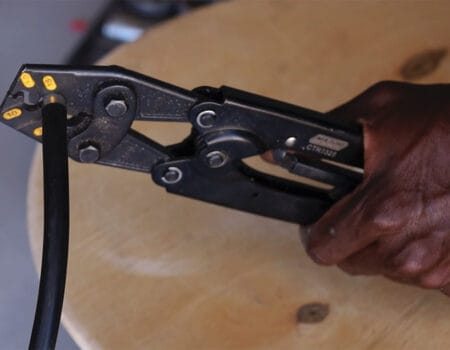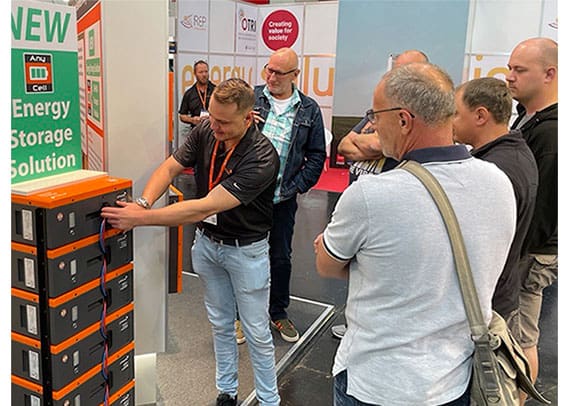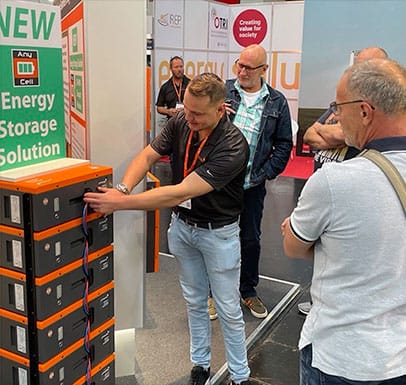
Pillars: Awareness, Education
Understanding the Issue at Hand
Energy poverty has been defined by the World Economic Forum to be the lack of access to sustainable, modern energy services and products. This goes beyond voluntary green energy initiatives in developed countries. Habitat for Humanity drives the point of a basic “lack of adequate, affordable, reliable, quality, safe, and environmentally sound energy services to support development.” Unfortunately, economic and social development is a direct contributor that creates a line between the ‘haves’ and the ‘have nots’ regarding energy distribution. Simply put by Habitat for Humanity, “poorer countries are those usually equipped with the worst energy services, which contribute to malnourishment, unhealthy living conditions and limited access to education and employment.”
The question we have to answer is: How do these conditions change if basic energy access distribution doesn’t change? Just as food and water are considered a basic human right, the concept of energy access must be considered when energy distribution plans, funding, and projects are being discussed. Globally, we must assure we are pushing government entities and large companies to put resources – time and funds – toward improving energy access around the world.
Identifying the problem is the first step in building a more sustainable future and Phocos is lucky enough to work with many organizations that make positive impacts every day. In order to be successful, people of every class and nation need to demand ‘energy access to all’ to speed up the energy transition. For example, the next trailblazers could include a mother in a small village in Namibia or Morocco, a teacher from a rural town in the United States, the CEO of a big company in Paris, a nurse in India, or leaders of government programs in Nigeria. The point is, anyone who is informed about energy poverty – and how it denies opportunity – can help spark change.
Tracking Real Progress with Concern for Millions Still Left Behind
Numbers often bring concepts to life. Seeing the below data heightens the sense of urgency.
This interactive chart from Our World Data shows there is a positive trend from 1998 to 2019. While the world’s population is growing, the number of people without access to electricity is moving in the right direction. However, when reviewing the last year of data available in this study, there are still approximately 761 million people in the world who still don’t have access to electricity. That calculates to approximately 10% of the world’s population still living without access to reliable electricity. Our World Data explains “gains in access are moving much too slow to reach our goal of universal access by 2030. This is particularly true for Sub-Saharan Africa — despite the share of the population with electricity rising steadily, population growth meant that the total number of people without access was on the rise until 2016. Accelerated progress will be needed to ensure this number now continues to fall.”
Let’s look at some individual countries in this interactive chart:
- India: The rapidly growing population in the South Asia nation of India is a shining example for developing countries throughout the world. Over the last 30 years, India has reduced its energy poverty from nearly 50% of its population to just under 2% of its 1.37 billion residents today.
- Nigeria: A cautionary tale for other African nations, while Nigeria has seen incredible growth all across the country, the government has been unable to effectively wipe out energy poverty. Around 90 million people in Nigeria do not have access to electricity.
- El Salvador: In Latin America, El Salvador has nearly eliminated energy poverty within its borders. It was a different story in 1991, when nearly a third of residents lived without electricity. With a concentrated effort on bringing power to every citizen, El Salvador achieved what many other nations aspire to accomplish.
- Philippines: In other parts of the world, such as the Philippines, there is cause for hope. This quickly growing island nation reduced its energy poverty from nearly 33% of its population in 1993 to less than 5% by 2019.
- Burkina Faso: Much like India and Nigeria, Burkina Faso has seen incredible growth, more than doubling its population between 1993 and 2019. Unfortunately, just as was the case in 1993, the vast majority of residents today do not have access to electricity. More assistance is needed to help overlooked, but rapidly growing nations, bring power to their citizens.
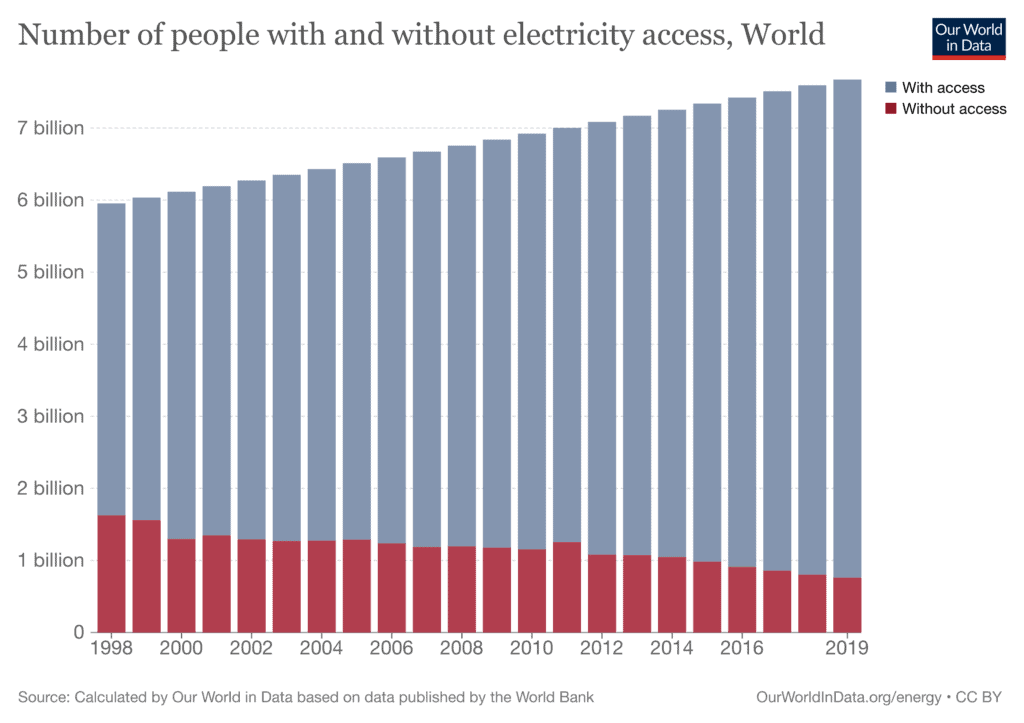
Where are the Biggest Challenges?
“Energy poverty is the ultimate economic hindrance as it prevents people from participating in the modern economy,” reports the Visual Capitalist. This map shows where people are living in conditions that restrict health, safety, education, and overall opportunity. These people are literally still living in the dark and are often without a voice to have the influence to change their circumstances.
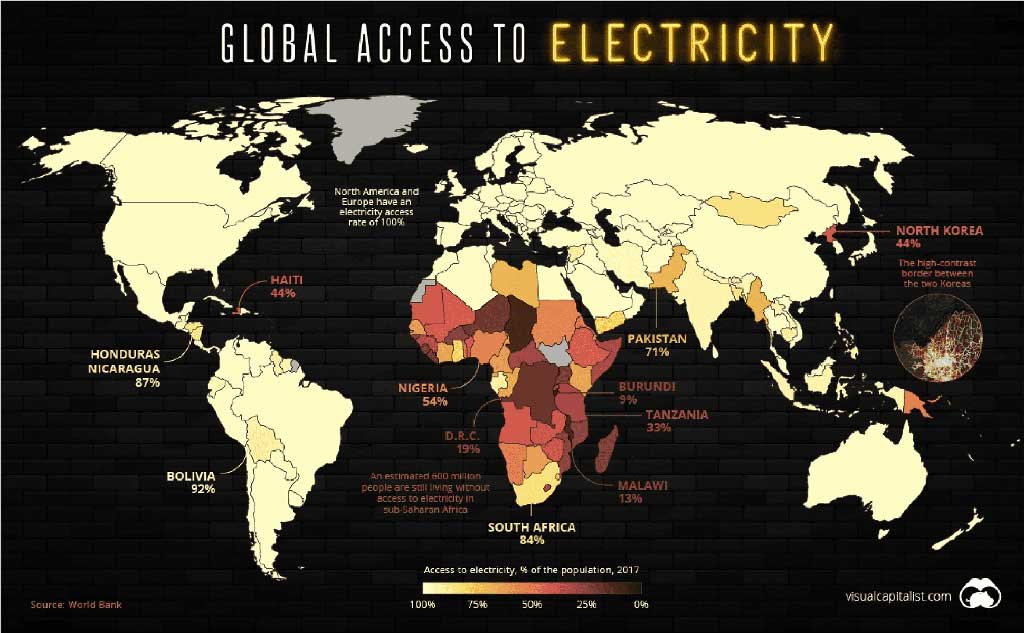
More Insights to Become Involved
- Sustainable Energy For All offers updates, shares specific facts and figures about energy access challenges, and tracks progress toward important goals set by the United Nations Sustainable Development Goals to help you find guidelines, tools, and templates related to electricity access relevant to a specific country to match your interests.
- Power For All is another resource sharing important podcasts, articles, videos, studies, and plans to improve renewable energy leading the way to solve energy access challenges. This organization is a global coalition of 200 private and public organizations campaigning to deliver universal energy access before 2030 through the power of decentralized, renewable electricity.
- The United Nations has set several important SDGs, created in 2015 to end poverty, protect the planet, and ensure that by 2030 all people enjoy peace and prosperity. SDG7 relates specifically to access to affordable and clean energy. This is about supporting the people living without electricity, being accountable for the burden energy users have in affecting climate change and realizing efficiency is part of the solution. To get a deeper understanding of the breakout of the SDG7 goal, view the individual targets here, as it pinpoints specific objectives to achieve by 2030.
- The International Renewable Energy Agency (IRENA) is another excellent resource that shares valuable insights on the topic of energy access. It is an intergovernmental organization that has a vision of helping countries transition to a sustainable energy future. See their 2021 report that is tracking the progress of the United Nations SDG7 initiative. They also share a renewable energy roadmap that determines the potential that certain countries have to ramp up renewable energy, and in conjunction with country experts, present a full picture of the opportunities to help decision and policy makers.
Our individual actions will be vital to help reach the SDG7 goals set forth by the United Nations. With a little time and effort utilizing the countless resources at our disposal to not only become educated on the global issue of energy poverty and the challenges it creates for hundreds of millions of people, we can also feel empowered to do whatever we can to help initiate change. In the end, we can all agree, 10% of the world’s population needs to be recognized and as World Energy Day nears, it is important to keep this topic front and center. Start your involvement by going to one of the links above, doing your own research, or checking out our Global Success Stories to learn about a few organizations who are making a real impact for real people. If you are looking for options to donate time or money, there are some non-profit groups we highlight who are doing great work with tangible results. With the involvement of key partners, Phocos is proud to play a pivotal role in reducing energy poverty around the globe.
World Energy Day is a great opportunity to shine a light on this important topic.
